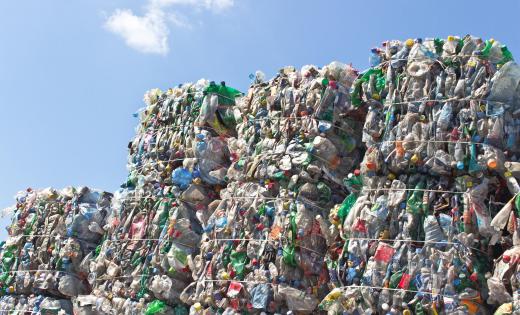There are hundreds of different types of plastic raw materials. Additionally, each type of plastic may vary in certain specifications, such as density and strength. By definition, plastics are able to be molded, so most plastic raw materials are available in various forms. The choice of plastic rolls, sheets or pellets is usually determined by the type of molding machinery used by product manufacturers. Selection of which plastic compound to use is a matter of what properties are desired in the finished product.
Plastic is an organic polymer. Chemically, most are very long chains of repeating hydrocarbons, consisting exclusively or primarily of hydrogen and carbon atoms. There are a few plastics, still relevant to modern civilization, made from very natural organic sources. Rubber is made from the sap of a plant; celluloid is made from cellulose, the ingredient that gives all plants their structural form. The majority of plastics in the modern world have been made from petroleum oil or natural gas.

Recyclable plastics are called thermoplastics because their chemical structures are the same in both solid and hot molten states. Less common thermosetting plastics establish their permanent structures once solidified. Plastic raw materials can also be categorized according to whether their polymers line up in an orderly, almost crystalline matrix, or else in a more random, or amorphous structure.

When it comes to plastic raw materials, a manufacturer’s buying decision is principally based on the physical requirements of the product they are making. There are many different types of plastic precisely because each has a different mix of properties. Disposable polyethylene (PE) bags are relatively lightweight, but they tolerate a great amount of stretch before easily tearing apart. High density polyethylene (HDPE), on the other hand, is well-suited to form into beverage bottles. Low density polyethylene (LDPE) is particularly tolerant of cold temperature and is often used in furniture and building materials.

At the other end of the scale, polyamides (PA) such as variants of Nylon® can withstand very high temperatures and is therefore used for applications such as insulation and mechanical parts. Other technical specifications of a given plastic include its flexibility and elasticity. These variables determine whether a product should be made with polypropylene (PP), polystyrene (PS), polyvinyl chloride (PVC), or another plastic. Some types of specialized plastic were custom formulated to a single product’s specifications.
Plastic raw materials come in many different forms, and this choice is also made in part on the intended product. Bags are made from rolls, for example. More often than not, the choice is influenced by the type of molding equipment the manufacturer employs. Raw plastic in sheet form are needed for compression-molding and vacuum-molding equipment, whereas rods and bricks are fed into most extrusion-molding machines. Small pellets, which is usually the form of any recycled plastic supply, are the preferred form for injection-molding equipment.
